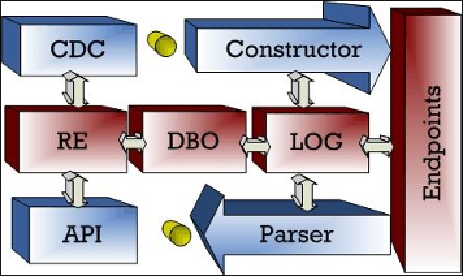Database Reference
In-Depth Information
• File object handling is also rather simple in implementation, but again we would
advise you to use Java for that and wrap it into the PL/SQL package. We also ad-
vise you to avoid handling remote file objects from your DB.
Conclusion
Although being very simple and lightweight, the entire solution is about 40 PL/SQL pack-
ages (only core, excluding individual CDMs constructor/parser pairs), 10 separate and
embedded Java modules, 4 separate FSO/FTP scripts, and a complete ESR DB schema as
presented in the previous chapter. From the operations' perspective, it includes about 100
individual installation scripts, assembled in one bundle for jobs, triggers, index/table op-
timization, and so on. We simply do not have enough space to show it to you in detail
(source code for core packages will be provided together with the ESR DB schema), but
the general idea has been conveyed quite clearly, covering all aspects of solution's life-
cycle, starting from the development's perspective, as follows:
• It is quite possible to implement a business agnostic solution in any silo-based
Oracle application, converting it to be completely SOA-oriented. Following the
SOA paradigm, with a clear understanding of design principles and relations
between service artifacts, all these packages were delivered into production in 40
working days.
• Design proved to be so native and logical that after a couple of hours of training,
all developers from the main RRD vendors become familiar with the concept and
were capable of carrying on. The reason for that can be seen through the follow-
ing figure—the red architectural blocks will be received by every team directly
from the framework and the team will have to do only minor changes in the blue
ones adapting them to specific EBM/Event. The DBO part is actually our Service
Repository, as shown in the following figure:

Search WWH ::

Custom Search